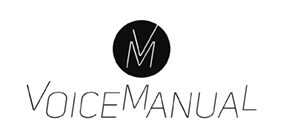Learning new songs or choral parts is a big part of singing hobby, work or education for all kinds of singers. How can we do that in the most efficient way? Here are a few tips.
1. Listen To Different Versions
Start learning by listening the new song. If there are more than one version available listen to several different ones before starting practicing. Watch the sheet music at the same time if possible. Analyze at the same time:
- What are the emotions in the song?
- What is the intensity, where is the highest point of intensity?
- Are there parts that may be a challenge to your singing range?
Last but not least; remember to make your own version of the song after listening to the others.
2. Find The Most Adequate Key
Test which key suits your voice best. A singer can decide the key unless the song is a part of a musical theatre performance, sung with an orchestra or if it’s a choral piece. In those cases a singer must adapt to the key, but other than that, songs can usually be sung in any key.
When choosing the key pay attention to which one feels the most comfortable and which one sounds the best in your opinion. Recording different alternatives helps to choose as you can listen to yourself without singing at the same time. The easiest one to sing at first is not always the one that sounds best in the end.
3. Learn The Melody Without Lyrics
Lyrics help to remember the melody and the melody helps to remember the lyrics but sometimes it is advisible to separate them in the practicing phase. Learning the melody line without lyrics lets a singer to concentrate and practice the pitches and voice production.
The first goal of practicing without lyrics is to master the melody with ease. In order to achieve that several practicing tools can be used:
- humming with m
- pitch glide (ng)
- singing with lip roll, r, z or v
- try SOVT exercises with a straw
When you can sing the melody with ease go on by singing the melody with a vowel of your preference and with the voice qualities that you want to use in the song.
4. Practice By Speaking
Learn the lyrics and the meaning of them. Decide how to interpret them. Recite the lyrics with speaking voice while maintaining the emotions, intensity, phrasing, rhythms, accents and so on. You can also follow the melody line with your voice without actually singing.
5. Split Difficult Parts Into Smaller Pieces
It is worthwhile to split difficult parts of a new song into smaller pieces. For example if the second last note of a phrase is challenging, practice so that you start from that note and sing the last two notes first. When those come well out add the third last note and practice those three and so on.
Long and slow phrases are often demanding. Sometimes they can be practiced by shortening the long notes thus singing with staccato. It helps to maintain the activity of the body which is easily lost in long notes. After staccato continue practicing with non-legato and eventually with legato while sustaining the activity practiced with staccato.
6. Repeat Parts That Go Well
Practicing efficiently means concentrating on solving the problems immediately instead of singing the song through again and again. But it is as efficient to repeat parts that go well, too. Repetition helps muscles to remember what they are supposed to do. If you are not content with some parts and can’t solve the problems by yourself wait until you have a chance to work with your voice teacher. Repeating the parts that don’t go well only trains the muscles to remember unwanted movements.
7. Silent Practice Can Be Efficient
As paradoxal it sounds silent practice can be very efficient. Practice the difficult parts silently. That way your vocal folds can rest meanwhile other muscles are being trained. Sometimes it is also easier to find out why some parts don’t come out as wanted; what feels uncomfortable and why? What should be done to change that?
8. Be Patient And Persistent
It takes time to train the muscles. There are rarely quick fixes so remember to practice persistently and regularly. A little and often is more efficient than a lot and infrequently. If something can’t be fixed immediately don’t give up: it’s under process.

